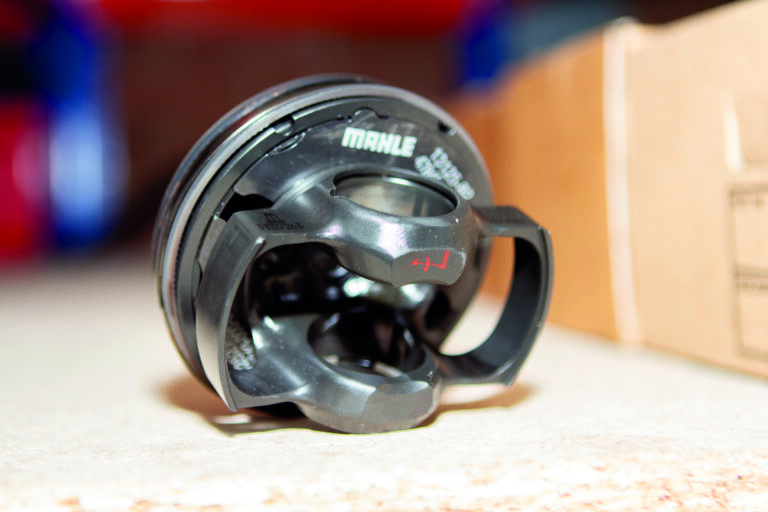The development of new materials has always been intrinsic to advances in powertrains, and developments canstill benefit ICE and BEV design.
Those of us involved in powertrain design need a certain degree of materials knowledge, even if it merely consists of a list of components and the exact materials from which each is to be produced, without knowing the reasons why. A successful design uses a material that allows us to produce a sufficiently durable part with an acceptable mass and cost. If we hit those targets, our bosses and customers are usually happy. In an almost static market with slow and minor incremental improvements in end-product capability, the choice of materials changes very little over years and decades.
However, the dawning realization of climate change has pushed all of us, whether involved in traditional IC engine design, hybrid powertrains or full electric propulsion, to look carefully at every aspect of what we do. Can we produce new products that involve fewer CO₂ emissions in production and use? Generally, the answer is yes. We can produce something more efficient, light and recyclable.
Of course, this new focus on reducing CO₂ emissions extends beyond the use of resources in production to reducing the emissions of the energy source. Renewable power generation, biofuels, synthetic hydrocarbon fuels and hydrogen can all offer means to reduce current powertrain emissions.
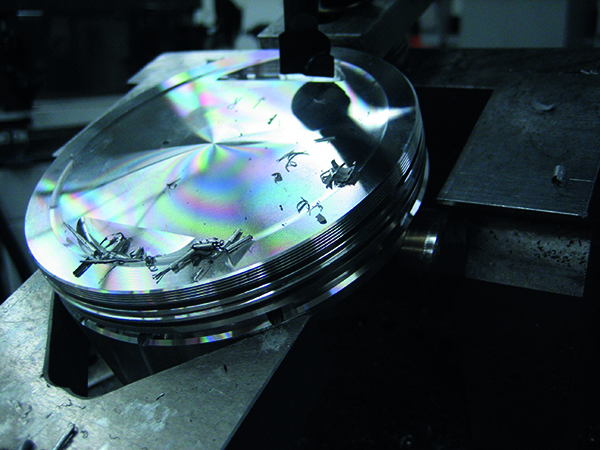
However, as we look to produce better products, new materials can enable improved design. In the few pages of an article, or even using a full magazine, we can’t hope to cover all the latest emerging materials. We can only talk about a few examples of materials development. From engines to transmissions and from batteries to e-motors, improved materials, along with better manufacturing techniques, will play a part in delivering a lower rate of CO₂ build-up in the atmosphere. Reducing the existing atmospheric concentration of CO₂ is another story.
As engineers, we should be technology-agnostic and do what we believe or know to be best, based on data. We should be above the highly polarized debate between those with entrenched views based only on emotion. We can all see the benefits of producing better powertrains, of every type.
ICE and Transmission Materials
Engine materials are split into a few basic types, and are generally easily recycled. With a few hours and a basic toolkit, a good mechanic will split an engine or transmission into non-ferrous and ferrous piles, probably with further quantities of polymers and composites.
When we look at the rapidly decreasing budgets allocated to engine design and development and the rise of electrified powertrains, we may feel that there is little benefit to further work on engine materials. However, engines, in one form or another, are likely to be with us for some time to come and materials development can enable further increases in efficiency or a reduction in mass and engine volume for a given output.
There are certain areas of engine design where lightweight components are of particular value. The valvetrain is one such area. The paper by Kanzaki et al1 demonstrates that even small savings in valvetrain mass on a new engine design can enable the use of shorter valves, lighter springs and therefore a reduction in cylinder head height. A shorter engine can be significantly lighter and, particularly where the engine height defines the hood line, influence the whole vehicle design and aero performance. A smaller, lighter engine requires less substantial mounting hardware, and lower vehicle mass permits the same performance with a lower-output engine. This is a virtuous circle, enabled by clever design and materials development.
In practice, the increasing adoption of titanium for valves, springs, spring retainers and collets can help with valve control. However, when applied to a clean-sheet design rather than a legacy one, it can be even more beneficial. Several companies have also researched aluminum poppet valves. The most successful of these have employed aluminum MMCs (metal matrix composites), which have proved viable for spring retainers in testing.
Another area of significant potency for mass reduction is the piston assembly. Weight saved on the piston can allow a lighter piston pin. Savings on the piston assembly and pin can in turn permit the use of a lighter connecting rod. All of the foregoing can reduce bearing stress (or bearing area for a given stress), which should give lower friction. The lower rotating and reciprocating mass requires less balance mass on the crankshaft. Where the crankshaft counterweight defines the bottom of the engine, we might find that not only is the engine lighter, but the crankshaft centerline can be lowered in the car.
Materials developments enabling the reduction of piston assembly and cranktrain mass include higher-strength aluminum for pistons, titanium (DLC coated) for piston pins and aluminum MMC for connecting rods (titanium rods have been used in some production road motorcycles for more than 30 years and for almost 20 years in some niche production passenger cars).
The use of high-thermal-conductivity piston rings made of copper alloys offers the promise of mass savings and efficiency improvements. The mass savings come through a reduction in piston temperatures and therefore an increase in allowable stress. Efficiency improvements may be realized by being able to increase compression ratio and providing scope to push the ring a little higher on the piston.
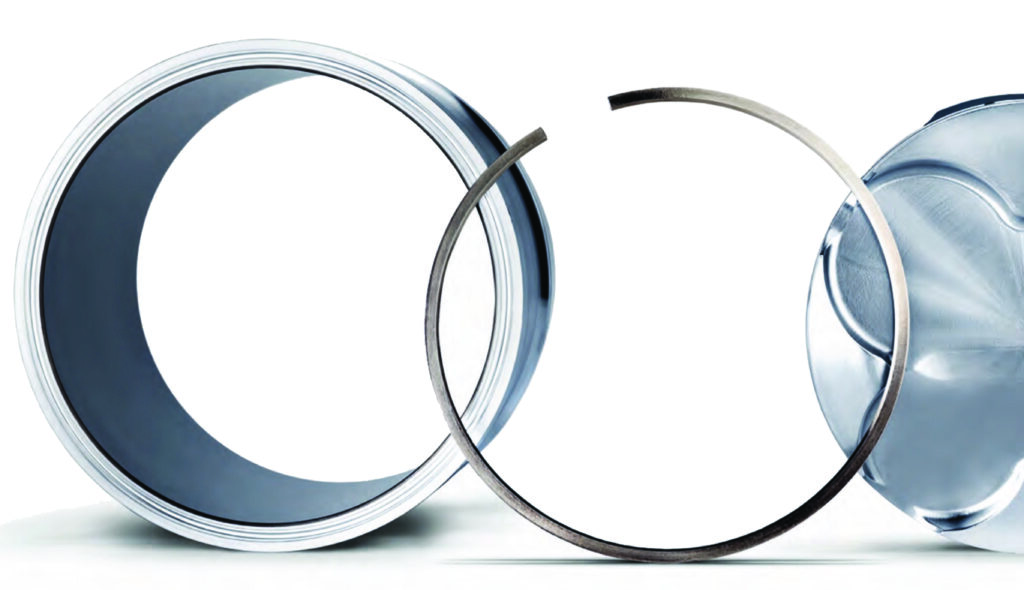
One company that is particularly active in materials development for engines is Materion, which has put its money where its mouth is by funding engine testing with renowned British engine expert Cosworth. Producing MMC and non-MMC piston materials, MMCs for other applications (including connecting rods) and novel copper alloys for piston rings, Materion is not letting the stories predicting the demise of the IC engine deter it from developing materials.
In engine tests, the company’s PerforMet copper alloy has shown real promise for use in piston rings.2 A 2.3 liter Ecoboost engine equipped with high-strength MMC pistons and copper-alloy piston rings showed measurable improvements not only in engine mass but also in also friction and brake specific fuel consumption (BSFC).
Plastic engines
Polymers have always offered the possibility of lightweight components, but engineers have tended not to adopt them due to the durability and cost-effectiveness of metals. Matti Holtzberg, one of the original pioneers in the field of polymer materials development for engines, was involved in the original Polimotor project, which produced a largely polymer racing engine in the 1980s.
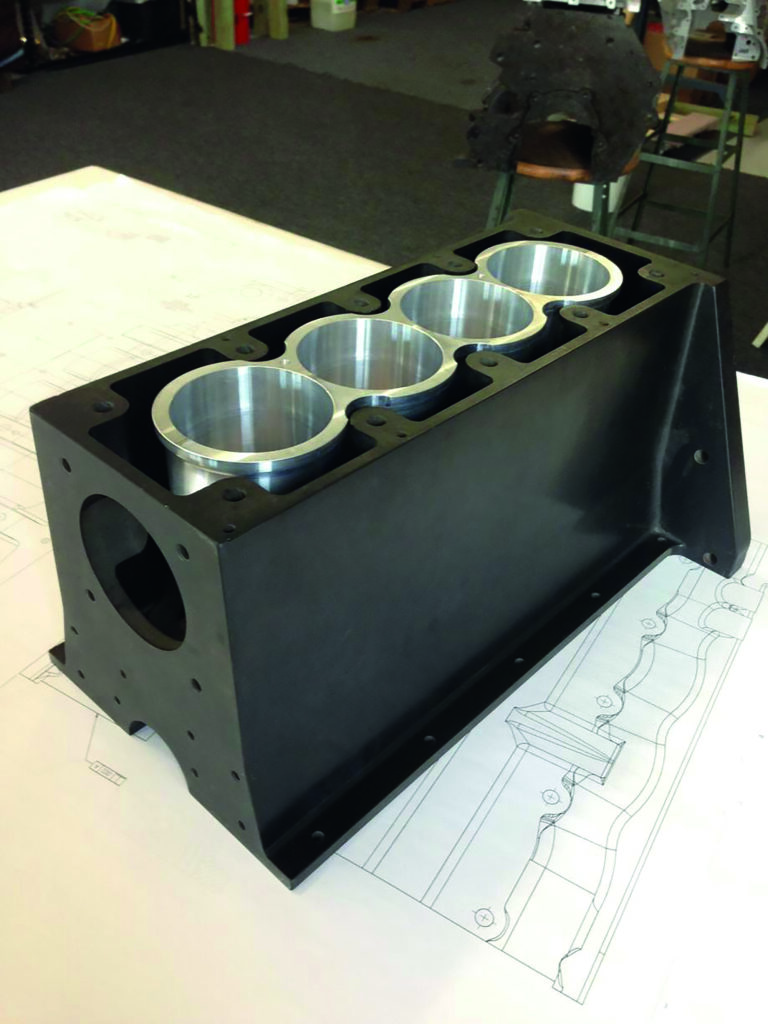
Back then, a competitive racing engine featuring polymer cylinder block, piston skirts, valve stems and many other parts seemed to open up some very promising avenues of development but was then largely forgotten. The project was hugely ambitious and, if not a total racing success, was certainly an engineering triumph very worthy of study. The SAE paper by Gaudette3 covers the early history of the materials, when polyamide- imide was used. More recently with Polimotor, Holtzberg has developed fiber-reinforced materials that offer the potential to save weight on structural parts. Cylinder blocks and other large components have been molded, and the materials are also suitable for additive manufacturing techniques. Given the interest in using AM for prototyping, developing a material suited to injection molding and AM is a sensible idea.
Electric Vehicles
The rise of electrified passenger car transportation has been remarkable, especially since the restriction of personal movement during the Covid pandemic showed us how quickly the concentration
of certain pollutants declined. It was always accepted that the decarbonization of personal transportation would be a key element in reducing the rate of increase of atmospheric CO₂, but the willingness of large parts of the car-buying public to embrace this was perhaps not understood (even by potential buyers). Although there are different ways to achieve the decarbonization of transportation, it is clear that BEVs will form a significant part of any solution. Therefore, the development of new materials for transportation electrification is important.
Battery Materials
The development of new battery materials continues at pace. While the basis of automotive cell production remains dominated by lithium, new anode and cathode materials under development offer significantly increased energy density. This is important in the adoption of BEV; for a given battery mass, increased energy density has the potential to produce greater vehicle range and increase the speed of charging. Alternatively, for a given amount of energy storage, a significantly lighter and cheaper battery will result.
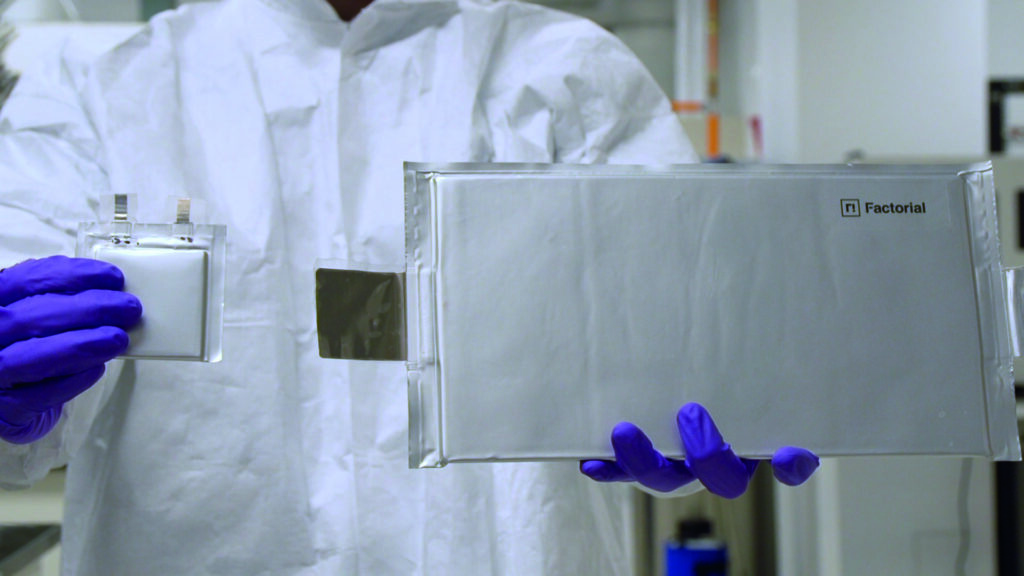
The development of solid electrolyte materials has piqued the interest of several automotive OEMs owing to the wide range of benefits potentially on offer. Solid-state batteries should be safer, offer greater energy density and work well over a wider range of temperatures than the existing cells, which employ flammable liquid electrolytes. Although they promise very useful technical advantages, solid-state batteries are not yet at a level of technical maturity to be produced at scale. Although producing any product in huge quantities significantly reduces cost, solid-state cells are currently projected to be significantly more expensive per kWh of energy capacity than their more conventional liquid-electrolyte equivalents.
Thermal Insulation
Although we are all familiar with cork as a sealing material for expensive drinks, we may not be aware of its wider use as a very effective thermal insulator. Cork oaks are noted for their ability to regenerate following a forest fire. The effectiveness of the bark (from which cork products are produced) in protecting the main trunk of the tree means that cork oaks can often regenerate a new canopy from the main trunk. The cork bark is harvested from living trees and has been used as a thermal insulator in aerospace and spaceflight applications for many years. It is also gaining in popularity as a sealing material in electric vehicle applications and as a fire-resistant thermal insulator to protect battery cases in the event of battery thermal runaway.
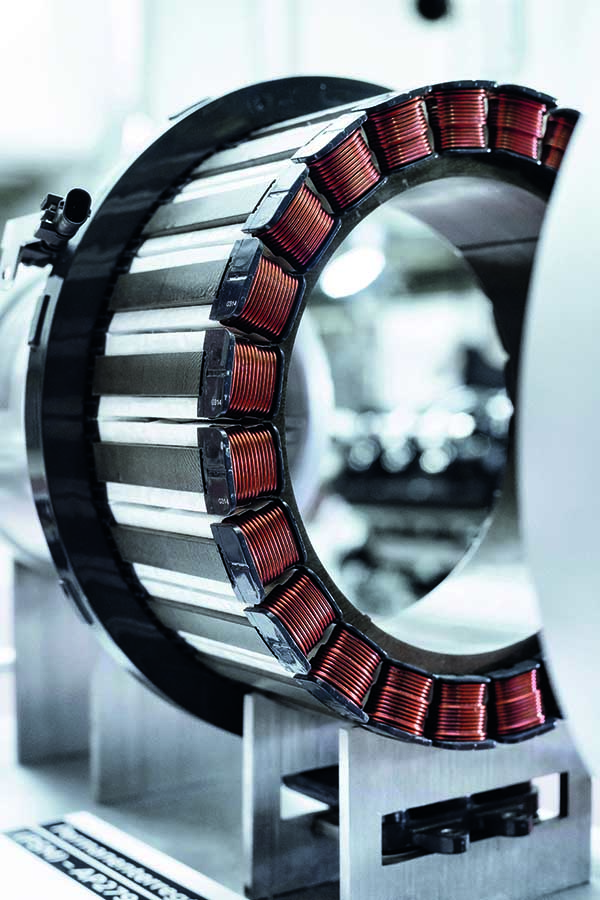
This was one of the enabling technologies in the battery produced by Electroflight to break the electric air-speed record in 2021. Such materials are not plain cork but a composite made of cork granules in a matrix of phenolic resin. In testing, a 2-3mm thickness of the cork-phenolic composite material was sufficient to prevent the carbon-composite battery case catching fire and even reaching the glass transition temperature of the case’s epoxy matrix.
Electric Motor Materials
Electric motors are the subject of intense development to best combine performance with low mass, reliability and acceptable costs. Of course, everyone understands that the electric motor is wonderfully efficient as a device to convert stored energy to mechanical work. Internal combustion engines have an inherent limit on their efficiency (and practical engines are a very long way from approaching that limit), but electric motors are already commonly more than 90% efficient over a great part of their operating range. The sources of inefficiency are mainly electrical; mechanical losses are often due to a couple of bearings and perhaps a seal or two. The electrical losses fall into two groups: resistive losses (commonly called copper losses) and eddy current losses (commonly called iron losses).
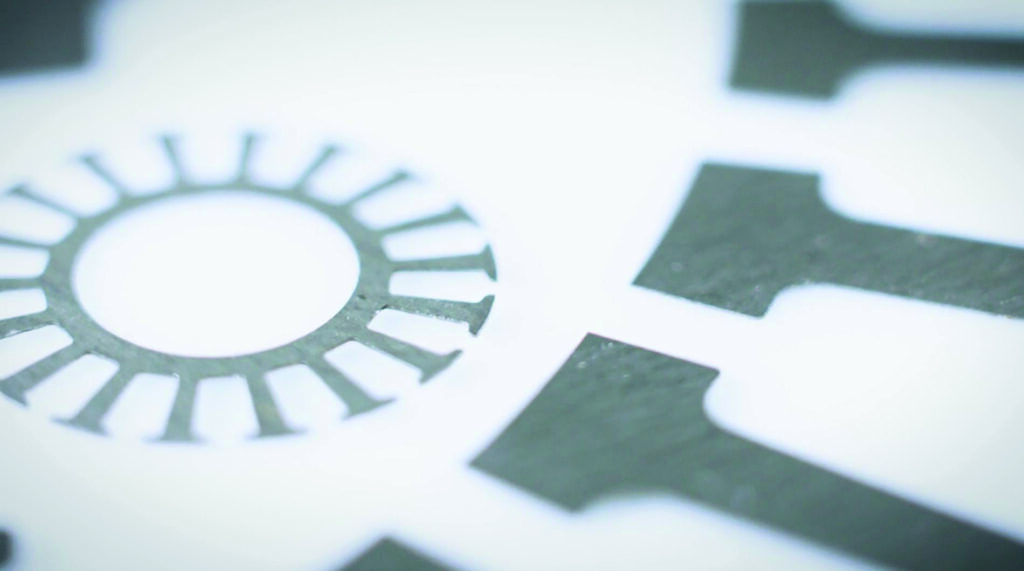
Copper losses are hard to avoid, being due to the currents used in the electric machine and the fundamental physical properties of the copper material itself. In general, highly pure coppers are used because they have the highest electrical conductivity. There is little to be gained in terms of decreasing copper losses through materials development. However, the processing of copper materials through different product forms and electrical insulation is important. For example, in high-frequency applications, the skin effect is important and a common approach is to use multi-stranded wires. Losses are also reduced if each of these wires takes its turn on the outside of a wire bundle. Braided or woven wire forms called litz wire minimize losses in high-frequency electrical machines and can also be formed into rectangular sections if required to aid winding efficiency.
When a large number of conductors are used in a slot, the thickness of the insulating coating on each wire can be significant, so wire manufacturers are always trying to improve the wire coatings (often referred to as ‘enamel’ even though they are commonly polymers) by reducing coating thickness without compromising quality.
Iron losses are a different matter and there is a great deal to be gained here, but this has to be done without compromising the other properties of electrical steels that enable great performance from a small motor. Eddy current losses are proportional to the square of the frequency of the machine and the square of the thickness of the material. Although the losses are also proportional to other properties of the steel, by far the most effective way to reduce iron losses is to divide the thickness of the material into layers that are electrically insulated from one another. Generally speaking, iron losses due to eddy currents per unit volume are inversely proportional to the number of laminations. There is a cost penalty to using ever-finer laminations, and the use of the thinnest materials is often only justified in high-frequency machines.
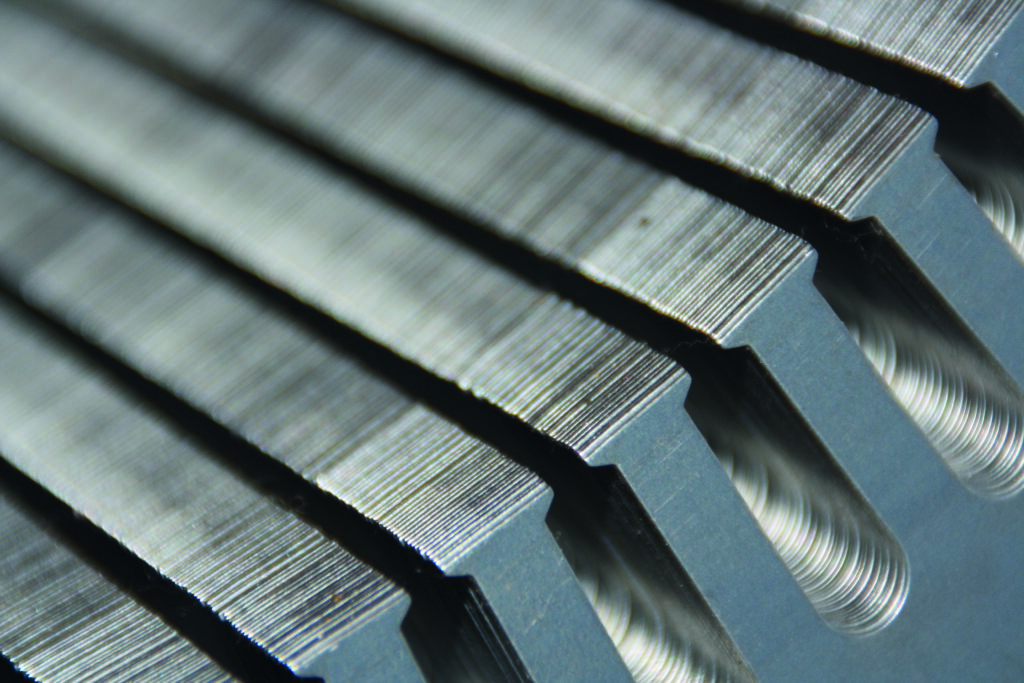
The development of electrical steel materials that can carry high magnetic flux density enables the production of motors that are notably compact and light. In the lightest and smallest machines it is desirable to use materials that only become ‘saturated’ at high magnetic field strength and have low eddy current losses. Such materials are often high in cobalt content and, as such, are expensive and come with supply chain and environmental disadvantages. Elements that would normally be used to reduce eddy current losses, such as aluminum and silicon, reduce the field strength at which magnetic saturation occurs.
It is therefore the case that the choice of an appropriate electrical steel to optimize cost, machine performance and weight has to take into account many variables.
Many of the motors used for automotive propulsion are of the permanent magnet type. These offer the highest torque density but at the cost of using more expensive materials in the form of permanent magnets that are part of the rotor. The magnet materials that produce the highest torque densities are known as rare earth magnets, but they suffer from a tendency to permanently lose their magnetism if they reach a certain temperature. There is much ongoing development to produce magnets that are more resilient in this regard without losing their inherent magnetic strength.
Inverter Materials
The rapid, complex switching operations required to control the currents for propulsion motors are taken care of by inverters, converting DC input from the battery to high-frequency AC (and vice versa). The inverter switches have commonly been based on silicon. To facilitate higher switching frequencies and voltages, increasing numbers of producers are turning to silicon carbide (SiC). You may also hear gallium nitride (GaN) mentioned, but this is generally used for higher switching frequencies and lower power than is common in electric vehicle powertrains; however, work on higher power applications is well advanced. In addition to SiC inverters being smaller and lighter than their silicon counterparts, they offer significant efficiency improvements.
Summary
From IC engines to EV powertrains, material development continues to enable considerable product improvements. Lighter, more efficient powertrains will result from materials being developed at present. An article of this length cannothope to cover all the important new materials and those under development. However, if, as an engineer, you look into the areas that concern you, it is certain that new materials are under development that could unlock great potential for future projects.
References
1) Kanzaki T, Hara N, Mori A and Ohtsubo K, Advantage of Lightweight Valve Train Component on Engines, SAE Paper 980573, 1998
2) Krus D, Tarrant A, Mack S, Egger A and Gudd D, Dynamometer Testing of Combustion Chamber Component Materials Designed to Improve Efficiency While Maintaining Engine Performance and Durability, Materion white paper
3) Gaudette E P, Plastics within the Internal Combustion Engine, SAE Paper 850815

